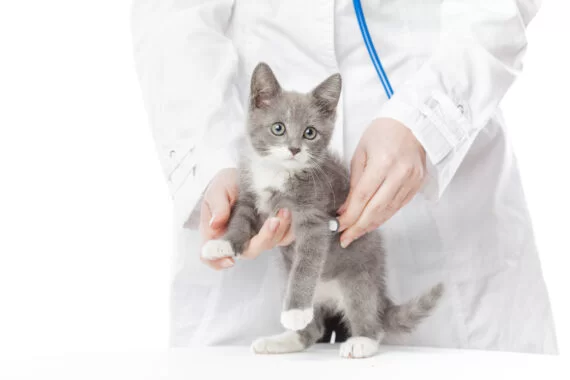
Feline Infectious Peritonitis (FIP) is an absolute nightmare for cat owners. Considered one of the “top three feline fatal diseases” in the veterinary world, it has an extremely high mortality rate, reaching up to 99%, along with exorbitant treatment costs. Even with owners sparing no expense, there’s no guarantee of recovery, often leaving them heartbroken and financially drained.
FIP is caused by a mutation of the feline coronavirus, commonly affecting kittens between 3 to 9 months old. The virus usually resides in the cat’s intestinal tract and is often shed through feces. Under normal circumstances, it remains harmless. However, stress can trigger a mutation, causing the virus to attack other organs. It’s important to note that while the unmutated virus is highly contagious, cats with FIP are not contagious.
The symptoms of FIP can be subtle and vary. Early signs may include sudden finickiness about food, loss of appetite, constipation, or extreme lethargy. There are two main types: “wet” FIP, which is characterized by fluid accumulation in the abdomen or chest, resulting in an enlarged belly, and “dry” FIP, which may present with external symptoms such as severe spasms, seizures, cloudy eyes, abnormal pupil size, and eye tremors. Regularly checking for physiological signs like ascites, pleural effusion, eye issues, seizures, jaundice, constipation, wasting, lethargy, crouching, and fever is crucial.
Diagnosing FIP is a complex and often arduous process that requires various tests at a veterinary hospital. Once diagnosed, owners are faced with a difficult decision: treatment or euthanasia. In the past, euthanasia was the common choice due to the lack of effective treatment. But now, GS441524 offers some hope. However, the treatment is costly and not a guaranteed cure. A 12 – week treatment cycle is necessary, and the administration can be difficult and painful for both the cat and the owner.
Prevention truly is the best form of treatment. Owners should strive to reduce their cats’ stress levels and maintain a healthy environment. In addition to treating the disease, proper care involves addressing other symptoms, enhancing nutrition, treating constipation, protecting the liver and kidneys, and replenishing blood and nutrients. The emotional and physical toll of dealing with a cat with FIP is immense, far beyond what can be quantified in monetary terms. It’s a journey that tests the love and dedication of every cat owner.
Remember, being vigilant and informed is the key to giving our furry friends the best chance at a healthy life.